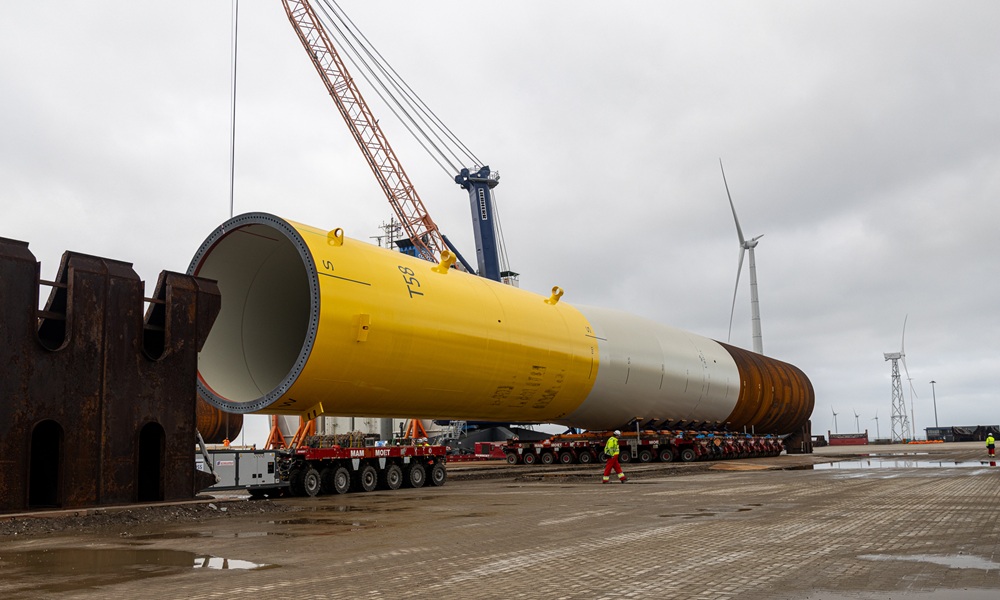Mammoet has played a pivotal role in the handling of next-generation wind turbine foundations for two of Europe’s largest offshore wind projects, Nordseecluster A in Germany and Thor in Denmark.
The company was appointed by Buss Ports in 2023 to marshal foundations at Buss Terminal Eemshaven in the Netherlands. Its scope covered the phased load-in, temporary storage and load-out of 116 XL monopile foundations for both projects. Together, Nordseecluster (A & B) and Thor – jointly developed by RWE (51%) and Norges Bank Investment Management (49%) – will deliver up to 2.6GW of capacity, supporting Germany and Denmark’s renewable energy targets.
The monopiles, weighing around 1,500t each and stretching up to 100m, required careful planning to manage differing specifications, limited ground bearing capacity at the quay, and strict tidal windows. Mammoet collaborated with Buss to integrate the latter’s saddle system with Self-Propelled Modular Transporters (SPMTs), ensuring safe and efficient transfers.
The load-in was further complicated by the shipping configuration: monopiles were transported transversely to maximise the number carried per voyage. This required Mammoet to unload them sideways, a method that reversed the outbound configuration from China.
To overcome height differences between the vessel deck and the extended 12m RoRo linkspan ramp, Mammoet deployed wooden mats on the deck to gain the necessary clearance. This avoided lengthy SPMT reconfigurations and allowed two monopiles to be offloaded per tidal window instead of one.
Monopiles were initially offloaded with sea grillages attached, speeding up the process, before being transferred to temporary storage on sand bunds. For final load-out, they were positioned in concrete cradles and lifted onto delivery vessels.
By maximising quay efficiency and overcoming tidal constraints, Mammoet and Buss were able to load up to ten monopiles per delivery voyage instead of eight or nine. This optimisation meant several long-haul shipments from China were avoided, each of which would have taken around 60 days at sea.
“This approach avoided the need to reconfigure equipment mid-operation and allowed us to meet tidal constraints comfortably,” said Wouter Santen, Project Manager at Mammoet. “Ultimately, it saved both time and cost across a year-long project.”
